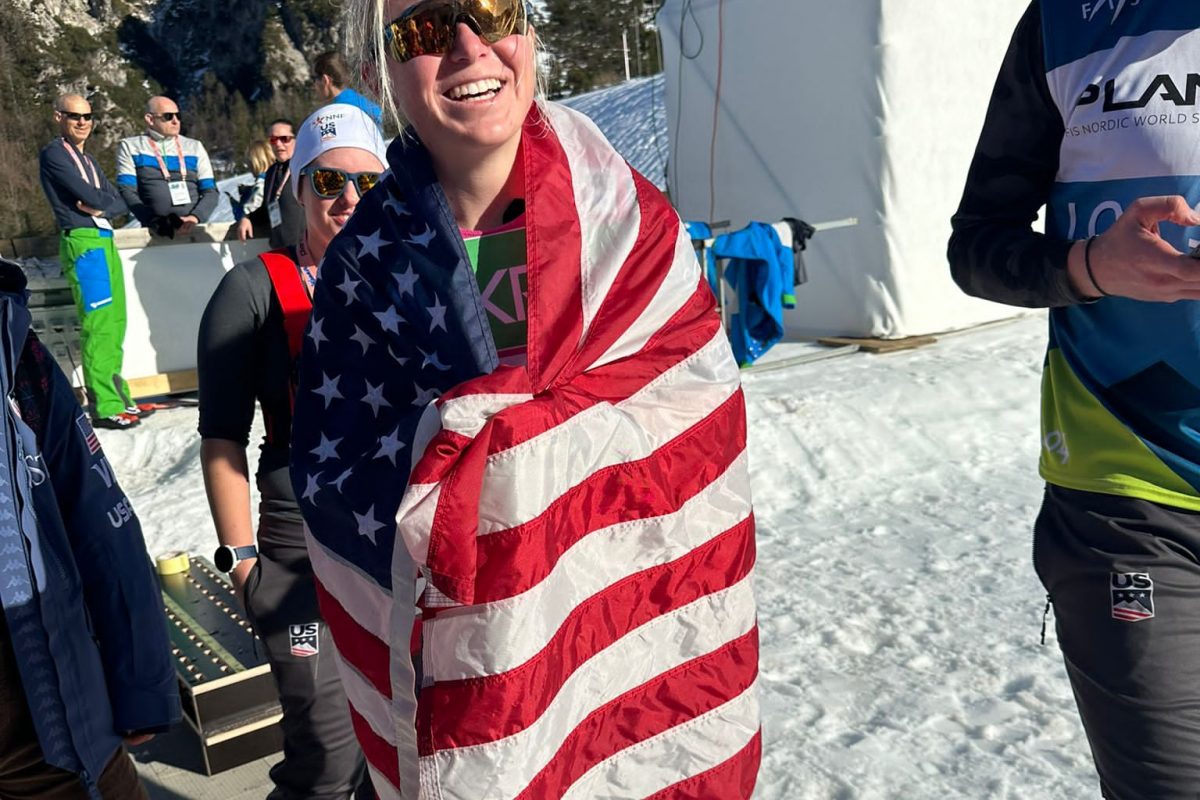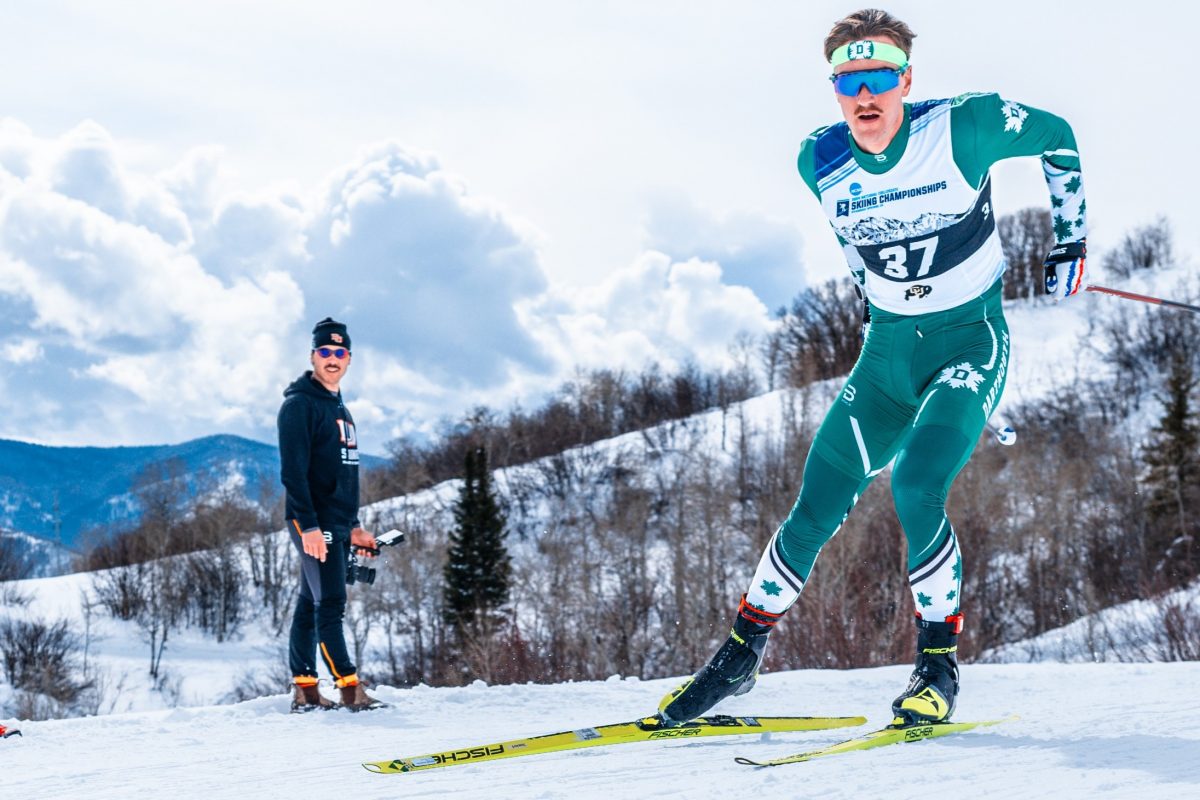
MILAN, Italy – Inside or out was the question of the day, and the right choice in the men’s final was in.
Eirik Brandsdal (NOR) won his first race of the season, and just the second of his career when he held the inside line into the homestretch in the Milan freestyle sprint.
Germany’s Josef Wenzl was just behind in second, with Teodor Peterson (SWE) riding an aggressive lane change in the final 200 meters to claim third.
Racing before a large and enthusiastic crowd in downtown Milan, Wenzl and Brandsdal matched up in all three heats en route to a 1-2 finish.
A total of .2 seconds separated the pair in the quarters and semis, and each man took a turn in the top spot.
But only the final matters at the end of the day, and what a final it was.
Five of the six men qualified in the top-9 with Sprint Cup leader Alexei Petukhov (RUS) and Peterson posting the second and third best times. Top qualifier Matias Strandvall was eliminated in the semis when he broke a pole late in the race.
The Finn just missed out on advancing as a lucky loser after finishing third in his heat while poling without a basket and a good 10 inches of shaft.
The two loop Milan course features a wide swooping corner into the homestretch with plenty of room for skiers to attack.
The space provided the big choice—take the long route to the outside, carrying more speed, and where the snow was firmer and faster, or staying tight on the best line through the more heavily skied and softer track.
Brandsdal went wide in his quarterfinal, but felt the distance wasn’t worth the speed, and switched for the semis.
“More people had used the track there [on the left] so it was more softer,” he told FasterSkier. “I just had to compare that to taking a longer line.”
He said that in the semi the strategy “worked really good,” and planned to employ it in the final.
But with Wenzl skiing right to one side in the semi, there would be no secrets.
“Wenzl, he was in my semifinal, and he saw me do that [stay left], so I was a little bit concerned he would take that line in the finish,” Brandsdal said.
The Norwegian described his plan “as a risk,” but at the end Wenzl stayed wide, giving Brandsdal the space he needed to work.
The heat was hotly contested, and the first and second place finishers were almost an afterthought with most eyes focused on a hard-charging Petukhov, and Peterson.
In what appears to be a new strategy, Petukhov showed patience early in his heats, waiting for at least a lap before moving into position.
He did the same in the final, but may have left his attack too late. He climbed into fourth as the last corner approached, and needing the space, swung well to the outside, Peterson just ahead to his right.

The Swede, however, mirroring an identical move her performed in the semis, did not hold his line into the third lane, instead continuing out, and cutting in front of Petukhov.
The Russian had nowhere to go, catching his ski on Peterson and crashing down.
“Sometimes it is really close in the finals,” Swedish coach Rikard Grip told FasterSkier when asked about Peterson’s aggressive tactics.
Women’s winner Ida Ingemarsdotter (SWE) used the outside lane to overtake Kikkan Randall (USA), and the plan was for Peterson to use the same strategy, though Grip noted that he did not head out directly as discussed.
Whether the move was one of devious intent, or merely the execution of pre-planned tactics, to reach the firmer snow on the outside, is unknown. Either way it landed the Swede on the podium, but was not enough to take Wenzl and Brandsdal.
Wenzl also carefully considered his path through the corner. He knew what had worked for Brandsdal, but felt cutting in too tightly would cause him to lose speed, so opted for the wider line.
Brandsdal’s planning extended beyond the last corner. He saw one key to the narrow and windy city-sprint course.
“When you wanted to advance, you had to go 100% for it,” Brandsdal told FasterSkier. “Because if you tried 90% you wouldn’t succeed…When I really wanted to attack, I went for it. It worked today.”
Both he and Wenzl are well suited to the flat course, the German more so.
“I have many power and when it is flat, it is a little bit better for me,” Wenzl said. “I can work more with this power,” he added pointing to his well-muscled torso.
For Brandsdal, it is less about power and more finesse, but the results were the same.
“When I am in good shape I manage to be calm and use my technique,” he said. “Then usually the flat terrain fits me pretty good.”

A veteran of nearly two-dozen World Cup sprint races, Brandsdal has been through the wringer on more than one occasion, but still is challenged to stay relaxed and execute his plan.
After a hard fought semifinal, Brandsdal said the adrenalin was so intense that he had to retire to a changing room to try to calm down.
“I couldn’t land afterwards,” he described feeling after the semi.
It took a coach to help bring him back to earth and focus on the finals.
The Norwegian entered the race well rested and well trained, having skipped the entire Tour de Ski.
Wenzl, Peterson, and Petukhov all raced the first the first six stages of the Tour to hit the two sprints.
For Wenzl, however, the Tour sprints were only secondary.
“I went to the Tour de Ski for training,” he told FasterSkier. “I think this was very good for me. The sprints at the Tour were ok, but first was training. I went really hard and my feeling is very good now. The competition is the hardest training.”
Wenzl earned his first podium since 2009, and had his best finish since bursting onto the scene by winning the city sprint in Dusseldorf in 2008.
All six skiers in the final will have a chance to face off again in Sunday’s team sprint on the same course.
Topher Sabot
Topher Sabot is the editor of FasterSkier.



